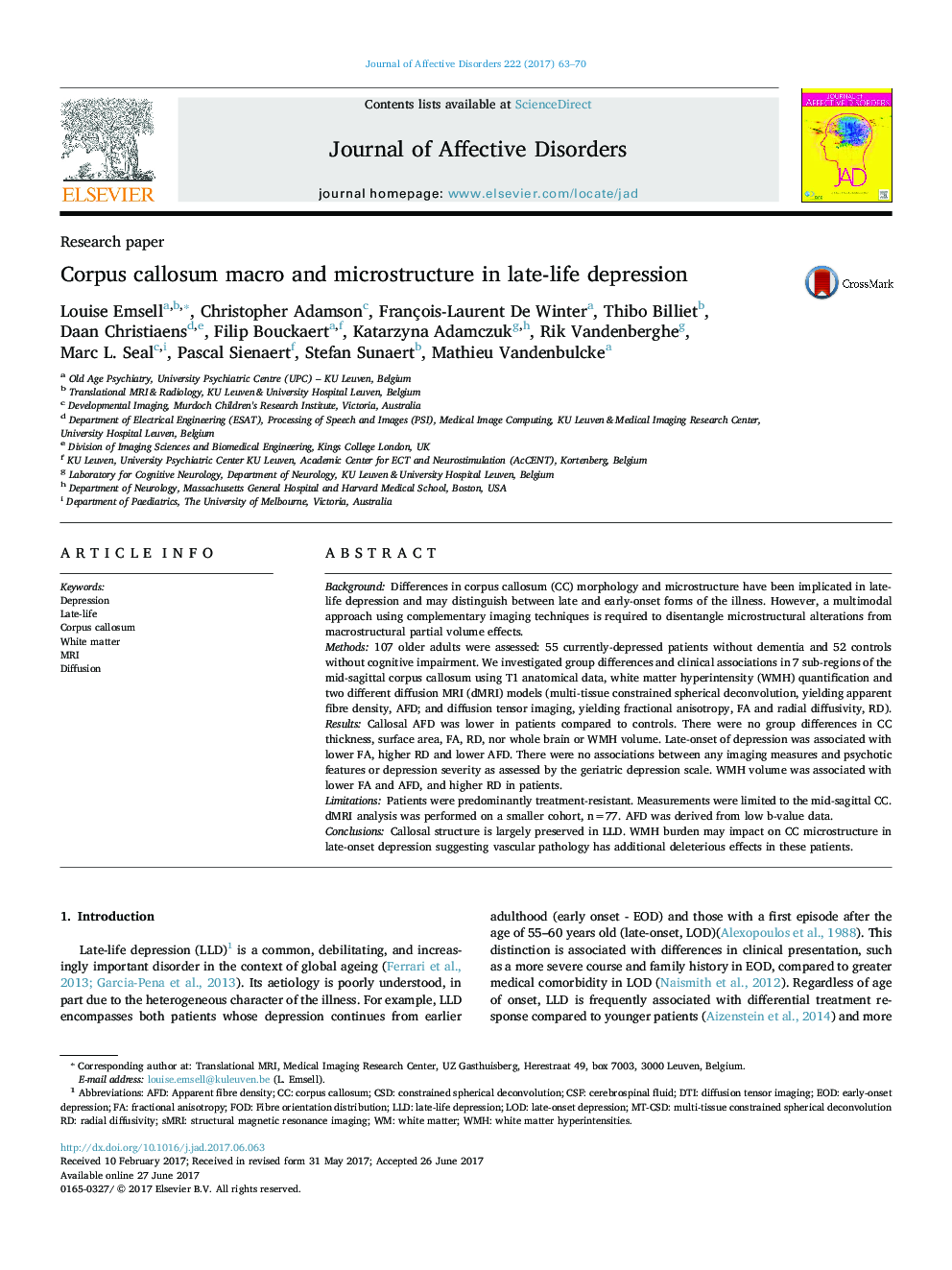| Article ID | Journal | Published Year | Pages | File Type |
|---|---|---|---|---|
| 5721844 | Journal of Affective Disorders | 2017 | 8 Pages |
â¢Corpus callosum morphology is largely preserved in late-life depression.â¢MRI measures discriminate between late (>55 yrs) and early onset of depression.â¢Psychosis and depression score not associated with corpus callosum structure in LLD.â¢WMH burden influences dMRI metrics and should be accounted for.â¢Alterations in callosal microstructure unlikely due to partial volume effects.
BackgroundDifferences in corpus callosum (CC) morphology and microstructure have been implicated in late-life depression and may distinguish between late and early-onset forms of the illness. However, a multimodal approach using complementary imaging techniques is required to disentangle microstructural alterations from macrostructural partial volume effects.Methods107 older adults were assessed: 55 currently-depressed patients without dementia and 52 controls without cognitive impairment. We investigated group differences and clinical associations in 7 sub-regions of the mid-sagittal corpus callosum using T1 anatomical data, white matter hyperintensity (WMH) quantification and two different diffusion MRI (dMRI) models (multi-tissue constrained spherical deconvolution, yielding apparent fibre density, AFD; and diffusion tensor imaging, yielding fractional anisotropy, FA and radial diffusivity, RD).ResultsCallosal AFD was lower in patients compared to controls. There were no group differences in CC thickness, surface area, FA, RD, nor whole brain or WMH volume. Late-onset of depression was associated with lower FA, higher RD and lower AFD. There were no associations between any imaging measures and psychotic features or depression severity as assessed by the geriatric depression scale. WMH volume was associated with lower FA and AFD, and higher RD in patients.LimitationsPatients were predominantly treatment-resistant. Measurements were limited to the mid-sagittal CC. dMRI analysis was performed on a smaller cohort, n=77. AFD was derived from low b-value data.ConclusionsCallosal structure is largely preserved in LLD. WMH burden may impact on CC microstructure in late-onset depression suggesting vascular pathology has additional deleterious effects in these patients.
Graphical abstractDownload high-res image (320KB)Download full-size image
